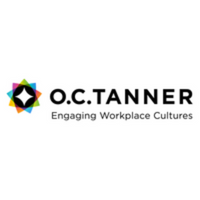Hybrid working: 3 ways the employee experience must adapt

Covid has accelerated the modern hybrid workplace and we’re now five to 10 years’ ahead of where we would have been otherwise. Of course, with greater flexibility and autonomy comes challenges, and with the physical office no longer as influential, organisations must adapt their employee experience to reflect the new hybrid workforce. Here are three key ways HR, rewards and benefits professionals can do this.
1. Support flexible working with all HR initiatives and packages. Employees will crave continued flexibility and this must cover more than just where they work. Considerations about when employees work are also important rather than focusing on a set number of hours. In fact, employers should concentrate on desired outputs, leaving the employees to determine how and when they can be achieved. And from a rewards point of view, ensuring flexibility in how and when employees are recognised and rewarded is key. Office-based recognition moments and after-work celebrations must be adapted or replaced to ensure inclusivity for all.
2. How employees’ health and wellbeing can be supported is vital. Hybrid working can deliver health and wellbeing benefits by balancing effectively the ease and comfort of homeworking with the collaborative and socialisation benefits of a thriving office. It also comes with risks to peoples’ health however, because with home-working it’s easier to blur the lines between work and personal life. Burnout is a real possibility.
The impact of homeworking on mental health is also a key consideration, with loneliness and a disconnect with colleagues more likely. The 2021 Global Culture Report identified that as we work remotely, we lose the easy opportunities to catch up with one another in the hallways or the breakout rooms. Because employees have to make more of an effort to stay connected virtually, it doesn’t always happen. Encouraging healthy working hours, plenty of breaks and regular catch-ups with leaders and colleagues is therefore important. This should be underpinned with robust and well-signposted mental health initiatives so support can be easily accessed when needed.
3. Organisations should fully leverage technology to improve the thousands of micro-experiences employees have at work. This needs to include collaborative technologies, such as Microsoft Teams and Slack, together with a recognition platform to ensure daily giving, receiving and witnessing of recognition. With the right recognition solution, remote employees receive the kind of leader-driven and peer-to-peer recognition that truly boosts workplace culture.
Post-pandemic life is now returning with remote working no longer a necessity, however a mix between office and home working will continue in response to the growing needs of a hybrid workforce. And by recognising that the physical office is no longer the lynchpin of the employee experience, this opens up new opportunities to engage with and support staff, wherever they are in the world.
The author is Dan Phipps, culture and engagement strategist at O.C. Tanner Europe.
This article is provided by O.C. Tanner Europe.
In partnership with O. C. Tanner
Giving teams the integrated tools they need when, where and how they need them.






